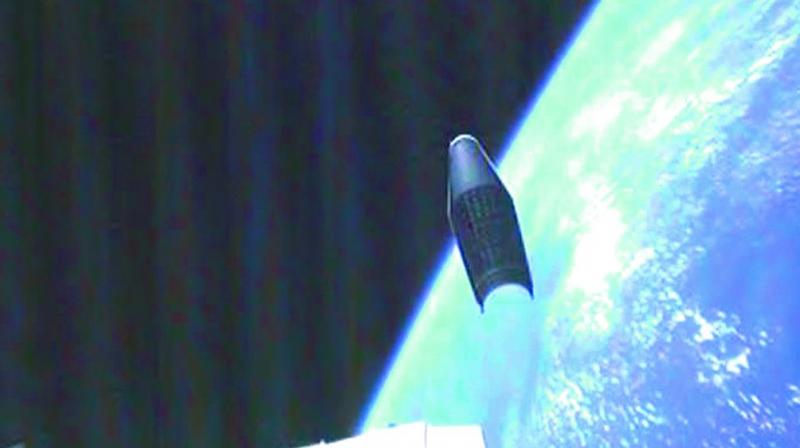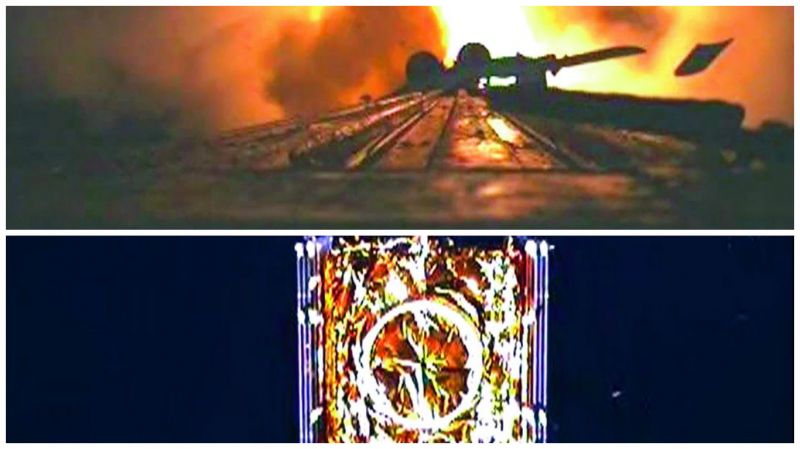In a first, cameras stream PSLV in action

Nellore: For the first time, ISRO scientists could watch the entire flight of the rocket from launch until orbit placement, thanks to five high performance cameras placed on each rocket stage.
The cameras, fitted on the PSLV-C36 which placed the 1,235-kg Resourcesat-2A in orbit after a textbook launch on Wednesday, beamed back high quality footage. The excitement of watching the visuals was reflected in the faces of senior scientists at mission control, especially when the satellite solar panels deployed 90 seconds after it was ejected into orbit.
Scientists were so far relying on electrical signals to study the sequence of separation. “For the first time we used our Navic guidance for the navigation of the rocket by installing a receiver and processor on the launch vehicle. We used to depend on other countries for the navigation of the launch vehicle in the past,” senior scientist Dr M. Annadurai told this newspaper.
 The cameras showed the launch of the PSLV from the spaceport at Sriharikota, and the deployment of the satellite in space 90 minutes after liftoff.
The cameras showed the launch of the PSLV from the spaceport at Sriharikota, and the deployment of the satellite in space 90 minutes after liftoff.
He said fuel-filling operations in the fourth stage were carried out via remote control, which helped cut the countdown time by more than 24 hours.
Another achievement was that the fourth stage fired without any oscillation, unlike in the past.
“The PSLV-launched Navic satellites and Navic is guiding PSLV now,” Vikram Sarabhai Space Centre director Dr Sivan said in a lighter vein. He said the Vikram processor, which was fabricated in the Semi-Conductor Laboratory of ISRO, was responsible for the navigation and control of PSLV-C36 through on-board computers.
Some Isro-made avionics systems were flown on board for preliminary tests to develop new technologies. There were also microelectomechanical sensors for performance evaluation of the launch operations.
Earlier, in its 38th flight, the Indian Space Research Organisation’s workhorse PSLV-C36 effortlessly placed the 1,235-kg Resourcesat-2A in its intended orbit on Wednesday.
The Polar Satellite Launch Vehicle took off on schedule from the Satish Dhawan Space Centre SHAR, Sriharikota, in Nellore district.
The data sent by Resourcesat2A, which has three cameras, will be used for agricultural applications like crop area and crop production estimation, drought monitoring, soil mapping, cropping system analysis and farm advisories generation.
After a flight of 17:05 minutes, the rocket reached the polar sun synchronous orbit at 824 km above the earth and released the satellite 47 seconds later. The satellite’s two solar arrays deployed automatically and Isro’s Telemetry, Tracking and Command Network at Bangalore took over the control of the satellite. ISRO chairman A.S. Kirankumar described it as a perfect launch. The PSLV as so far placed 122 satellites in orbit, 43 Indian and the rest from abroad.

